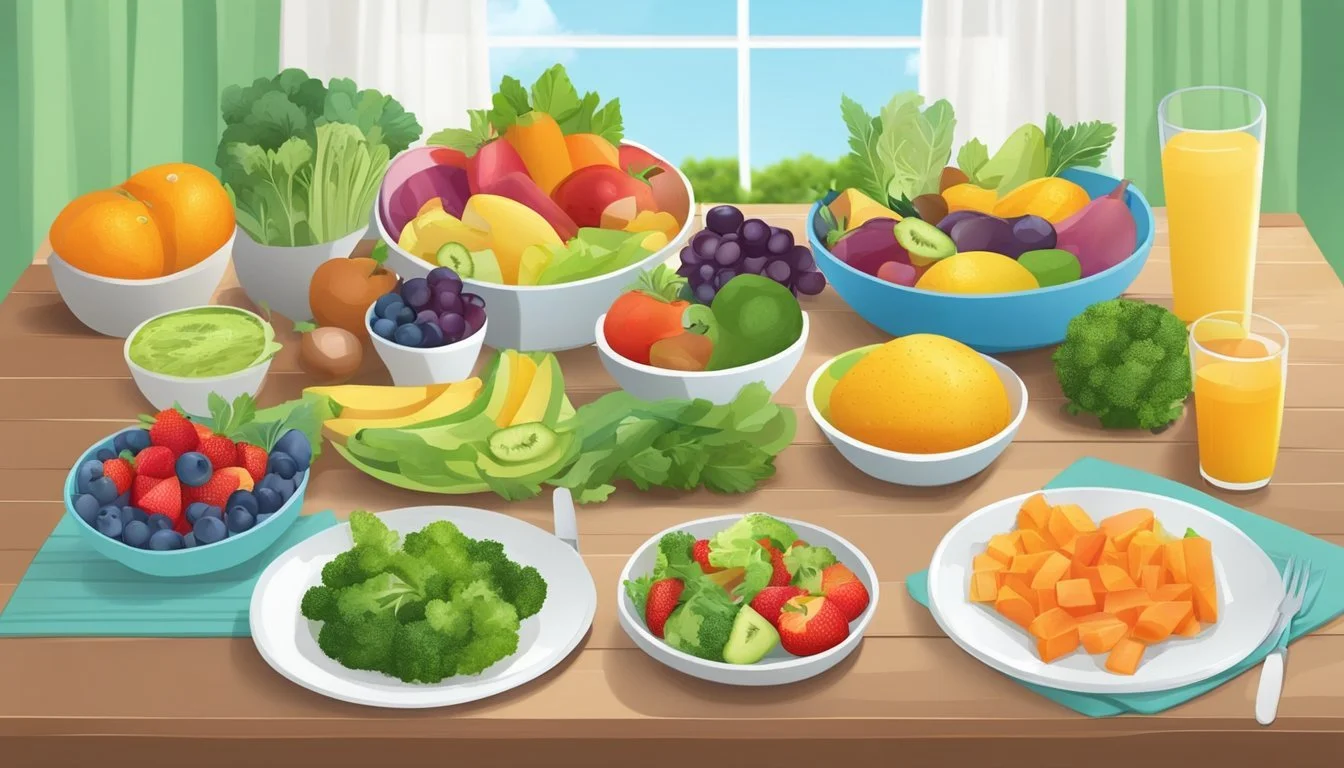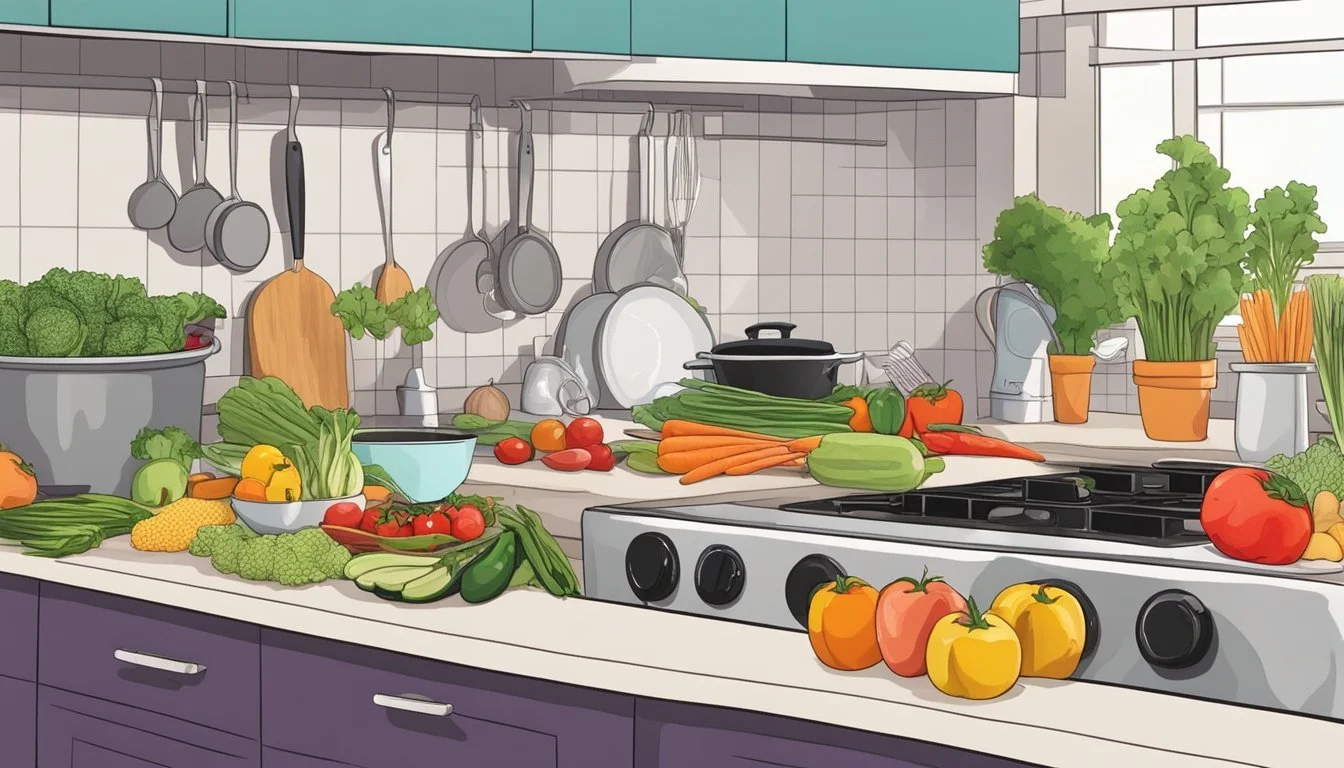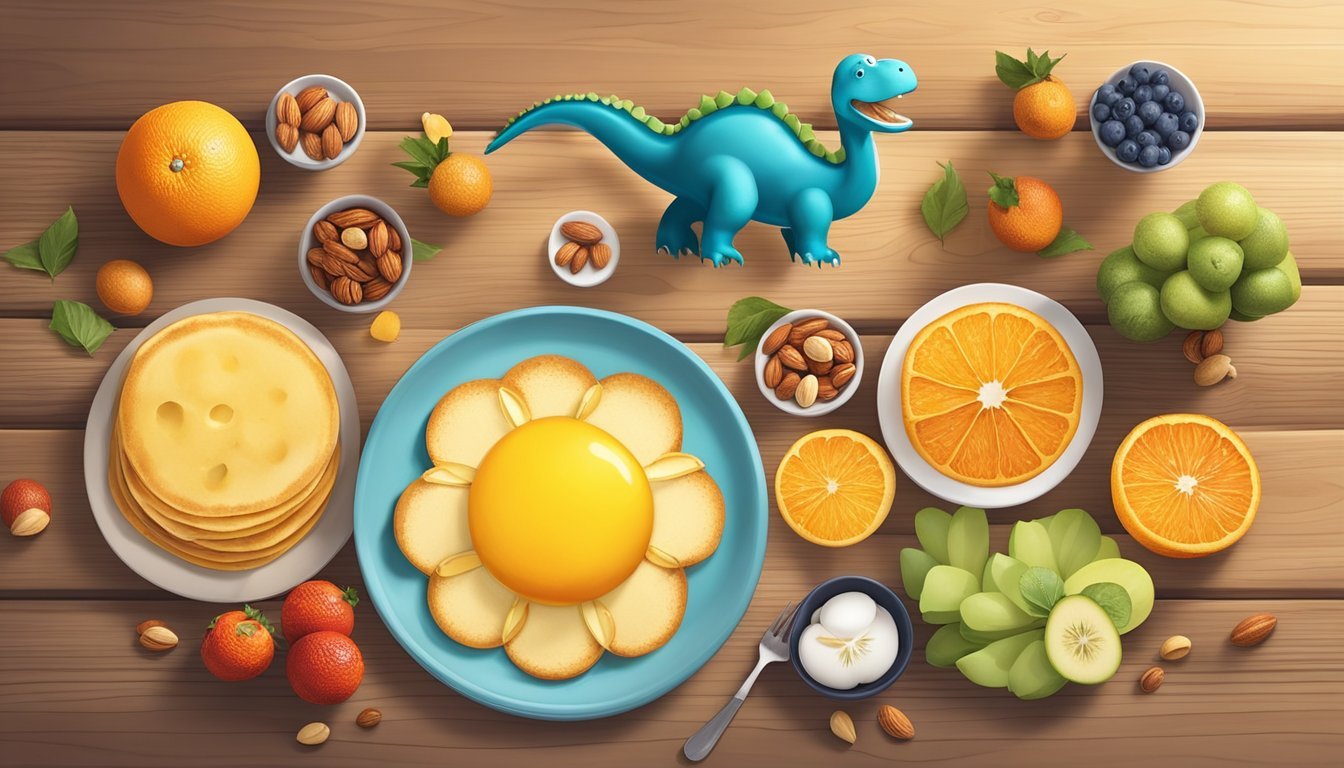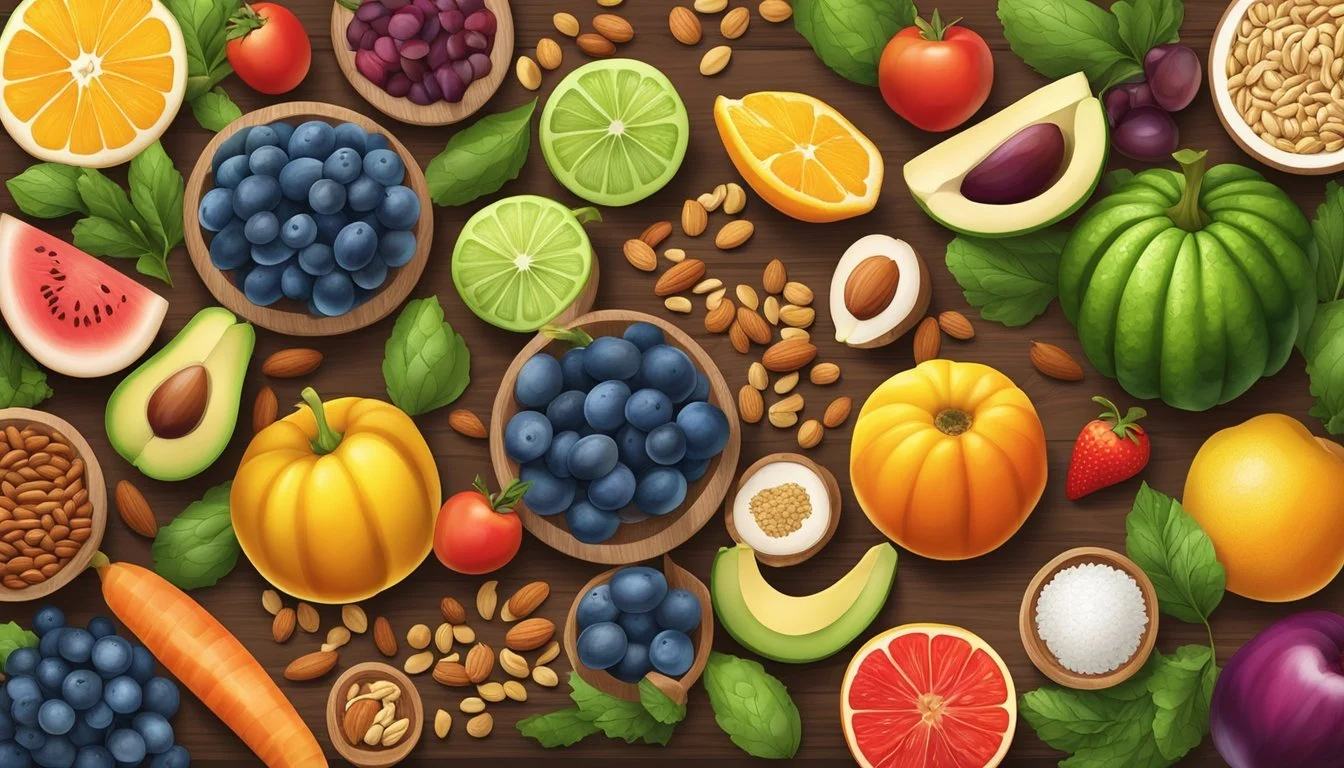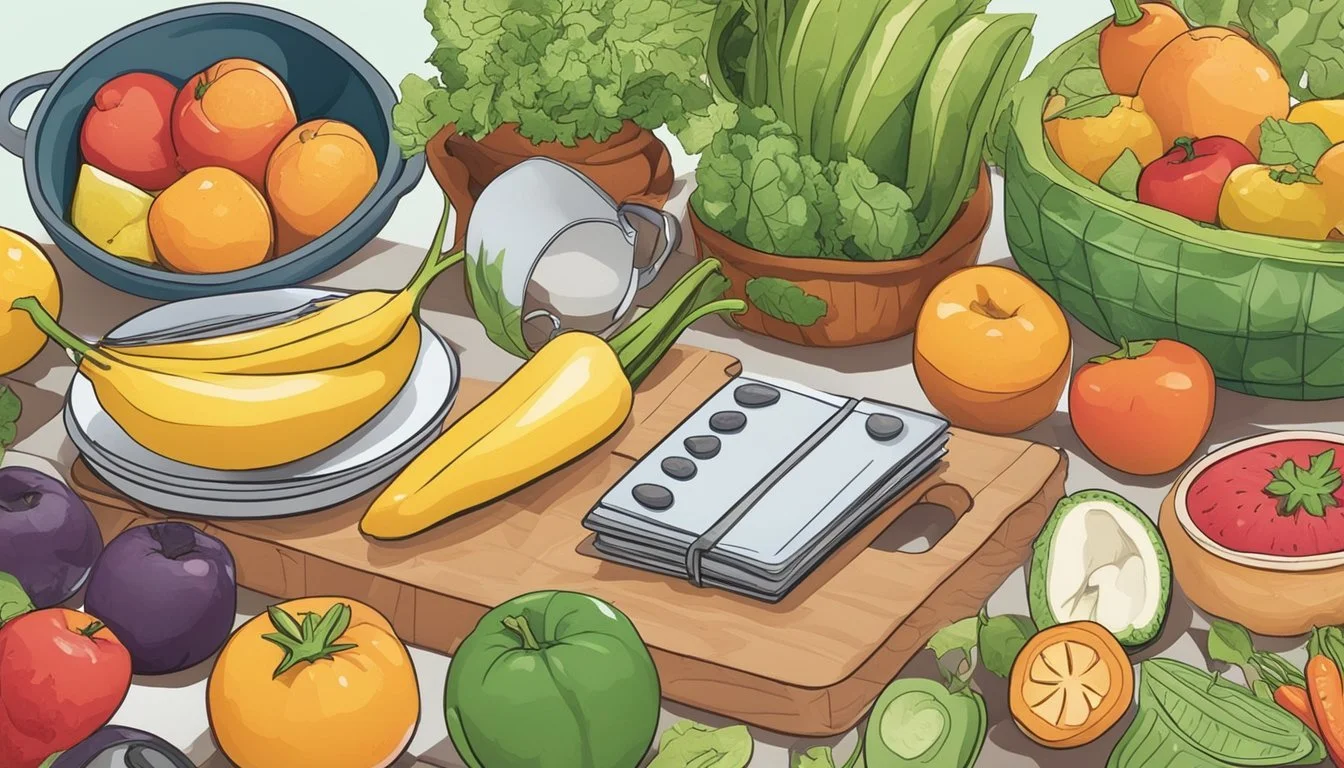How to Make Paleo Meals Kid-Friendly
Simple Strategies for Healthy Family Dining
Adopting a Paleo diet involves eating whole foods that our ancient ancestors might have hunted or gathered, avoiding processed foods and those with grains, dairy, and legumes. Parents might wonder how to balance the nutritious principles of Paleo with the often fickle taste preferences of children. The trick lies in crafting meals that are not only rich in protein, vegetables, and healthy fats but also appealing to young palates. By incorporating fun shapes, familiar flavors, and a bit of creativity, making Paleo meals kid-friendly becomes a manageable task.
Children are more likely to enjoy their meals when they're both visually appealing and tasty. Paleo-friendly ingredients can be transformed into a variety of dishes that kids love, like carrot breakfast cookies or pancake sandwiches. Protein-rich meat roll-ups, egg muffins, and dips like guacamole paired with vegetable sticks make for great lunchbox options. For dinner (What wine goes well with dinner?), turning Paleo ingredients into crowd-pleasers like chicken tenders or turkey meatballs ensures that the meals are as enjoyable as they are wholesome.
The challenge of combining a Paleo diet with kid-friendly meals isn't insurmountable. With a focus on whole foods and by mimicking conventional kids' favorites using Paleo-approved substitutions, parents can ensure their children are excited about their meals. Creative twists on classic dishes not only keep meals interesting for kids but also provide the nutritional benefits of a Paleo lifestyle.
Understanding Paleo Fundamentals
Adopting a Paleo diet for children entails a focus on whole foods and the exclusion of processed foods and gluten. These fundamentals ensure a nutrient-dense diet that supports growth and health.
What Is Paleo Diet?
The Paleo diet emphasizes eating foods that were available to our Paleolithic ancestors. This includes a high intake of vegetables, fruits, nuts, seeds, lean meats, and seafood. The rationale is that these foods are more in tune with human biology and digestion than modern processed foods.
Significance of Whole Foods in Paleo
Whole foods are the cornerstone of the Paleo diet—they are unrefined and unprocessed. They provide essential nutrients for growth and development in children. These foods are inherently gluten-free and provide a variety of macro and micronutrients necessary for a child's energy and vitality.
Examples of whole foods in a Paleo diet include:
Proteins: Lean meats, poultry, fish
Vegetables: Leafy greens, root vegetables
Fats: Avocados (how long does avocado last?), nuts, seeds
Fruits: Berries, apples, oranges
Avoiding Processed Foods and Gluten
The Paleo diet eliminates foods that are processed or contain gluten. Processed foods often include additives and preservatives that can detract from nutritional value.
Foods to avoid include:
Processed meats: hot dogs, lunch (What wine goes well with lunch?) meats
Refined sugars: Candies, pastries
Gluten-containing grains: Wheat, barley, rye
By focusing on real food and steering clear of gluten and processed items, parents can create a healthy, balanced Paleo diet for their children.
Essential Nutrients for Kids
Children's diets must be rich in protein, healthy fats, and a wide variety of vitamins and minerals to support their rapid growth and development.
Importance of Protein
Protein is crucial for a child’s growth as it's a fundamental component of all cells in the body. Meat roll-ups and eggs are excellent protein sources for a Paleo diet, which can play a part in everything from building muscle to repairing tissue.
Healthy Fats and Growth
Healthy fats are essential for children's brain development and overall growth. Options like avocado (guacamole) and nuts (if not allergic) can provide the necessary fats. Including seeds such as sunflower or chia offers alternative fat sources, especially beneficial for those following a nut-free diet.
Including Diverse Vitamins and Minerals
Children require a variety of vitamins and minerals for optimal health. Here's a quick list:
Vegetables: Carrot sticks and lettuce wraps are rich in fiber and key vitamins.
Fruits: Grapes and apple slices supply essential vitamins, antioxidants, and fiber.
Nuts and Seeds: In moderation, they can offer magnesium, zinc, and selenium.
Ensuring a diverse Paleo diet that includes these food groups can help cover a child’s nutritional needs.
Planning Kid-Friendly Paleo Meals
When transitioning kids to a Paleo diet, it’s crucial to plan meals that are both compliant with the lifestyle and appealing to young palates. The key is to find recipes that kids already love and transform them into Paleo-friendly versions, modify lunchbox contents to fit the new dietary guidelines, and ensure that nutritious meals are also delicious to satisfy picky eaters.
Incorporating Kid-Approved Paleo Recipes
Parents can easily modify familiar dishes to suit the Paleo diet by substituting grain and dairy ingredients with Paleo-approved alternatives. For example, a favorite like pancakes can be made with almond or coconut flour and sweetened with honey or maple syrup instead of the traditional wheat flour and refined sugar. Here are some recipes children tend to love:
Pancakes: Use almond flour, eggs, banana, and a touch of honey.
Cookies: Opt for coconut flour or nut butter-based recipes with natural sweeteners.
Pizza: Create a base with cauliflower crust and top with homemade tomato sauce and vegetable toppings.
Adapting Lunchboxes to Paleo Lifestyle
Lunches on the go can be adapted to fit a Paleo lifestyle with a balance of proteins, fats, and fresh produce. Meat roll-ups using high-quality deli meats, vegetable sticks like carrots (how long do carrots last?) and cucumbers, dips like guacamole, and fruits such as apple slices make nutritious and satisfying Paleo lunchbox fillers. Here is a structure for a balanced Paleo lunchbox:
Protein: Boiled eggs, grilled chicken strips, or meat roll-ups.
Veggies: A variety of raw vegetable sticks or lettuce wraps.
Healthy Fats: Nuts, seeds, or dips such as almond butter or Paleo mayonnaise.
Fruit: Fresh fruit pieces or berries for a natural sweetness.
Balancing Taste and Nutrition for Picky Eaters
For picky eaters, it's essential to find a balance between the Paleo diet's nutritional benefits and the taste preferences of children. One can do this by gradually introducing more vegetables in creative forms, such as making zucchini noodles or blending spinach into smoothies, and utilizing natural sweeteners like fruit purees to add flavor. Texture also plays a role in acceptance; crispy vegetable chips or smooth chia puddings can be more agreeable for children.
Creating Appealing Breakfasts
When preparing paleo meals for children, one must focus on both the nutritional content and the visual appeal of the dishes. Breakfast, often regarded as the most important meal of the day, provides an excellent opportunity to introduce kids to a variety of flavors and textures while adhering to paleo guidelines.
Fun and Nutritious Breakfast Options
Creating breakfast dishes that are both entertaining and nourishing can lead to increased interest in paleo eating among children. Eggs, a paleo staple, can be prepared in numerous ways, such as scrambled with sweet potatoes and spinach or shaped into fun molds. Incorporating vegetables into egg muffins or omelets adds a colorful touch while providing essential nutrients. For children who enjoy hands-on meals, bacon strips can serve as dippable items for egg yolk or, when cooked crisp, as "breadsticks" alongside a savory spread.
Scrambled Eggs: With sweet potatoes and spinach, loaded with protein and vitamins.
Egg Muffins: Veggie-packed, easy to hold, and perfect for on-the-go eating.
Bacon Strips: Crisp and dippable for interactive breakfast fun.
Paleo Substitutes for Traditional Breakfasts
Transitioning to paleo doesn't mean giving up familiar breakfast favorites. Substitutions using ingredients like almond flour can mimic the texture and flavor of traditional foods. Almond flour pancakes or waffles can be a weekend treat topped with fresh berries, while almond flour-based French toast offers a classic taste without the grains. Sweet potato toast serves as a nutrient-dense base for avocado or almond butter, ensuring a balance of carbohydrates and healthy fats.
Almond Flour Pancakes/Waffles: Topped with fresh berries, a grain-free delight.
French Toast: Made with almond flour, ensuring a traditional taste, grain-free.
Sweet Potato Toast: A wholesome substitute for bread; topped with avocado for healthy fats.
By focusing on these fun and nutritious breakfast options, as well as clever paleo substitutes, parents can ensure that their children's breakfasts are not only compliant with paleo eating but also enjoyable and satisfying.
Wholesome Paleo Lunch Ideas
Crafting a paleo lunch that is both nutritious and appealing to kids requires consideration of taste and ease of eating. The following subsections provide targeted suggestions for making paleo lunches that are perfect for school or home, as well as handheld options that are fun and flavorful.
Healthy Lunches for School and Home
Parents can ensure their children have energizing lunches by incorporating a balance of proteins, healthy fats, and vegetables. An example of a satisfying paleo lunch might include chicken nuggets made with almond meal for a crunch, paired with a side of sweet potato mash rich in vitamins. Adding a variety of colorful vegetables keeps the meal visually engaging and nutritionally diverse.
Protein: Almond-crusted chicken nuggets, hard-boiled eggs
Veggies: Carrot sticks, cucumber slices
Carbs: Sweet potato mash, cauliflower rice
Fats: Sliced avocado, homemade paleo-friendly mayo
This balance supports sustained energy and focus throughout the school day.
Lettuce Wraps and Handheld Options
Lettuce wraps offer a versatile and hands-on approach to paleo lunches. They can be filled with a variety of proteins like grilled chicken, turkey, or even fish. Accompanied by diced vegetables and a spread of guacamole or paleo-friendly dressing, lettuce wraps make a crunchy and hydrating lunch option.
Sample Lettuce Wrap Fillings:
Protein Options Veggies & Fruits Healthy Fats Grilled chicken Diced bell peppers Guacamole Seasoned turkey Sliced strawberries Homemade paleo vinaigrette Pan-seared shrimp Shredded carrots Nut-based cheese
The convenience of these handheld lunches adds to their appeal, making them an excellent choice for kids on the move.
Delicious Paleo Dinners
Creating kid-friendly paleo dinners focuses on combining nutritious ingredients with fun, interactive meal experiences. They should be simple to prepare, making them ideal for busy weeknights without compromising on taste or health.
Engaging Kids with Interactive Dinners
Spaghetti Squash Adventure: Transform a classic dish by replacing traditional noodles with spaghetti squash. Children often enjoy participating in the preparation, scraping the cooked squash into noodle-like strands. Serve it with homemade turkey meatballs, rich in protein and flavor, to keep this dinner both interactive and paleo-friendly.
Build-Your-Own Paleo Tacos: Utilize lettuce wraps instead of corn or flour tortillas and encourage children to fill them with their favorite fillings such as seasoned ground turkey, guacamole, and a variety of chopped veggies. This hands-on approach not only entertains but also allows them to understand their food better.
Quick and Easy Paleo Dinner Recipes
Sheet Pan Chicken Magic: One-pan dinners are a lifesaver, and a rosemary balsamic sheet pan chicken is no exception. Combine chicken thighs (What wine goes well with chicken thighs?), diced bacon, and slices of apple on a sheet pan for a balanced meal that requires minimal cleanup.
Paleo Dinner Table:
Recipe Main Ingredient Prep Time Cook Time Spaghetti Squash & Meatballs Spaghetti squash, ground turkey 10 mins 45 mins Paleo Chicken Tenders Almond flour, chicken breast 10 mins 15 mins Lettuce Wrap Tacos Ground turkey, lettuce leaves 15 mins 10 mins Balsamic Chicken Sheet Pan Chicken thighs, rosemary 10 mins 35 mins
Each recipe provides a nutritional powerhouse packed with proteins and vegetables while keeping the prep time short, ensuring that dinner is on the table swiftly, satisfying both the palate and the clock.
Paleo-Friendly Snacking
Effective Paleo snacking for children requires the right balance of simplicity, nutritional value, and taste. Careful selection and preparation of snacks can make them both healthy and appealing to kids.
Healthy Snack Options
One can never go wrong with whole fruits like apples, which are naturally sweet and a great source of fiber. To keep variety, one might also consider seasonal berries, such as strawberries and blueberries. Vegetable sticks, such as carrots, are another nutrient-dense option that provide a satisfying crunch. For healthy fats and protein, nuts and seeds offer convenient snacking but always check for allergies before serving them to children.
Paleo diets often eliminate grains, but one can create muffins using almond or coconut flours as a substitute for traditional wheat flours. Applesauce can be a natural sweetener in these baked goods and also serve as a snack on its own. When opting for commercially prepared snacks, look for ones with minimal added sugars and preservatives to stay within Paleo guidelines.
Prepping Snacks That Kids Love
Making snacks fun and engaging encourages children to enjoy Paleo-friendly foods. Here are easy snack preparations that kids are sure to love:
Fruit kebabs: Skewering pieces of fruit to create a rainbow of colors not only makes the fruit more appealing but also introduces kids to a variety of nutrients.
Dip stations: Kids love to dip. Providing a Paleo-compliant dip like guacamole alongside carrot sticks can make vegetables a pleasure to eat.
Nut-free alternatives: For nut-free environments, seeds like pumpkin or sunflower can be roasted with a pinch of sea salt for a satisfying snack.
Keeping snacks in accessible containers and at eye level allows children to make healthy choices independently. Consistently offering these Paleo-friendly snacks can help instill good eating habits from a young age.
Treats and Desserts
Creating paleo-friendly treats and desserts for kids means focusing on whole, unprocessed ingredients that satisfy their sweet tooth while aligning with paleo principles. Here are some recipes that do just that.
Indulgent Yet Healthy Desserts
For those times when children crave something rich and satisfying, chocolate avocado pudding is a perfect choice. It combines the creamy texture of avocado with the rich flavor of cocoa, sweetened naturally with dates or a touch of honey. Not only does it fulfill the desire for something chocolatey, but it also adds nutritional value with healthy fats and fiber.
Another delightful and healthy option is mango honey fruit leather. It's a portable and convenient treat made using ripe mangoes, providing natural sweetness, and a drizzle of honey, eliminating the need for refined sugars. Parents can make a batch in advance, offering their kids a chewy, sweet snack that is free of additives and preservatives.
No-Bake Treats and Baked Goods
Turning to no-bake treats, paleo biscuits can be both delicious and simple to make. Almond flour or coconut flour often serves as a substitute for grain-based flours, keeping them gluten-free and paleo-compliant. Adding natural sweeteners like honey or maple syrup can enhance the flavor without using refined sugars.
For a frozen treat, chocolate avocado pudding pops are a cool alternative. They take the goodness of chocolate avocado pudding and turn it into a fun, frozen pop that kids can enjoy on a hot day. This not only makes for a refreshing dessert but also sneaks in healthy ingredients in a format that's always a hit with the little ones.
When it comes to baked goods, paleo treats can be made with minimal, wholesome ingredients. Utilizing coconut flour, nut flours, and natural sweeteners, one can create everything from chocolate chip cookies to "oatmeal" raisin cookies without any grains or dairy. These treats often require only a handful of ingredients and can be made with little hassle, letting parents offer a variety of desserts without straying from a paleo lifestyle.
Avoiding Common Allergens
Making paleo meals kid-friendly often involves substituting common allergens with safe alternatives to ensure that children can enjoy delicious foods without health risks.
Nut-Free Paleo Variations
Children with nut allergies can still enjoy a variety of paleo dishes by using alternative flours and butters. Recipes that traditionally call for almond flour can utilize sunflower seed meal or coconut flour as a nut-free base. For spreads and butters, sunflower seed butter is a great substitute for almond butter, offering a similar texture and taste without the allergens.
Example Nut-Free Ingredient Swaps:
Use coconut flour in place of almond flour for baking.
Substitute almond butter with sunflower seed butter in recipes.
Add gelatin as a binder in recipes that need a nut-free thickening agent.
Dairy-Free Ingredients for Kids
Paleo diets naturally exclude dairy, which is beneficial for children with dairy allergies or lactose intolerance. Instead of traditional butter, paleo recipes can incorporate ghee (clarified butter) which may be tolerable for those with sensitivities, as it contains less lactose and casein. Additionally, coconut milk serves as a rich, creamy alternative to cow's milk and can be used in everything from smoothies to baking.
Example Dairy-Free Ingredient Swaps:
Replace butter with ghee or coconut oil for cooking and baking.
Use coconut milk as a dairy-free substitute in recipes requiring milk or cream.
Meal Prepping and Cooking Tips
Proper meal prepping and efficient cooking techniques allow parents to prepare kid-friendly paleo meals despite a busy schedule. The use of nutrient-dense ingredients like avocado and garlic enhances flavor and health benefits in recipes.
Efficient Paleo Meal Prepping
One begins by selecting recipes for the week that share common ingredients, allowing for batch preparation without waste. Lean meats, vegetables, and healthy fats can be prepared in advance. Avocados, a versatile and healthy fat, can be turned into guacamole or sliced for snacks and meals. Garlic, a flavor booster, can be minced in large quantities and added to dishes throughout the week.
Batch cooking: Cook large portions of staple ingredients like chicken or ground beef to use in multiple recipes.
Pre-cut vegetables: Chop or spiralize veggies ahead of time for quick assembly.
Packaging meals: Store individual meal components in clear containers for easy access and assembly.
Organizing the fridge with labeled sections for proteins, veggies, and ready-to-eat snacks prevents last-minute cooking stress. Kids can easily grab pre-portioned containers of carrot sticks or fruit for their lunches.
Cooking Techniques for Busy Parents
Cooking techniques that save time without compromising on nutrition or taste are essential. For example, one-pot or one-pan meals reduce cleaning time and streamline the cooking process.
One-pot meals: Utilize the slow cooker or Instant Pot for recipes like chili or stews that can cook without supervision.
Stir-frying: A quick way to cook pre-prepped veggies and meats with paleo-friendly sauces.
Roasting: Batch roast vegetables like sweet potatoes or brussels sprouts for a caramelized flavor.
Using kitchen gadgets such as a mandoline slicer for consistent veggie cuts or a garlic press to quickly prepare garlic saves preparation time. Embracing these tips can turn meal prepping and cooking into a hassle-free process, ensuring that parents always have healthy, paleo-friendly meals ready for their kids.
Navigating Social Situations
When a family follows a paleo diet, social gatherings may present challenges. Preparation and communication are essential to ensure kids can enjoy these events within the dietary framework.
Paleo-Friendly Options for Parties
For parties, parents can bring paleo-approved snacks and appetizers to share, ensuring their children have something to eat that meets their dietary needs. Common choices include:
Fresh vegetable platters with guacamole for dipping
Fruit kebabs for a sweet, fresh treat
Meatballs made with almond flour instead of breadcrumbs
By providing these options, not only do they ensure their child has something to eat, but they also introduce other guests to tasty paleo alternatives.
Educating Relatives and Friends on Paleo Choices
Communication is paramount when it comes to educating relatives and friends about a child's paleo diet.
Here are strategic ways to approach the topic:
Discuss: Explain the fundamentals of a paleo diet - focusing on whole, unprocessed foods like lean meats, fruits, and vegetables.
Demonstrate: Share delicious paleo-friendly recipes or bring a popular dish to family events.
Clarify: Emphasize which common foods are allowed, such as nuts and seeds, and which are to be avoided, like grains and refined sugars.
Through education, family and friends can become supportive allies, making social situations easier and more enjoyable for paleo-following families.
Resources and Tools
When approaching a paleo diet for kids, parents and guardians need reliable resources for recipes and must know how to assemble a comprehensive shopping list tailored to their children's needs.
Useful Books and Blogs
For those seeking a wealth of paleo recipes and advice, 'Paleo Running Momma' stands out as an excellent blog that offers a diverse array of kid-friendly dishes. It provides not only recipes but also insights into making paleo meals appealing to younger palates. Additionally, books such as "The Paleo Kids Cookbook" can be a lifesaver, offering both guidance and recipes that adhere strictly to paleo principles while keeping the fun in mealtime.
Creating a Paleo-Friendly Shopping List
To ensure a seamless transition and maintenance of a paleo lifestyle for kids, having a shopping list is crucial. The list should consist of predominately unprocessed foods, including:
Proteins: Grass-fed meats, free-range poultry, and wild-caught fish.
Vegetables: A colorful variety for nutrients, like leafy greens and root vegetables.
Fruits: In moderation, focusing on low-glycemic options like berries and apples.
Healthy fats: Such as avocados, nuts (if not allergic), and coconut products.
Seeds: Like chia or flaxseeds for omega-3 fatty acids.
One can find templates of paleo shopping lists online, or create a customized one that aligns with their children's preferences and nutritional needs.

